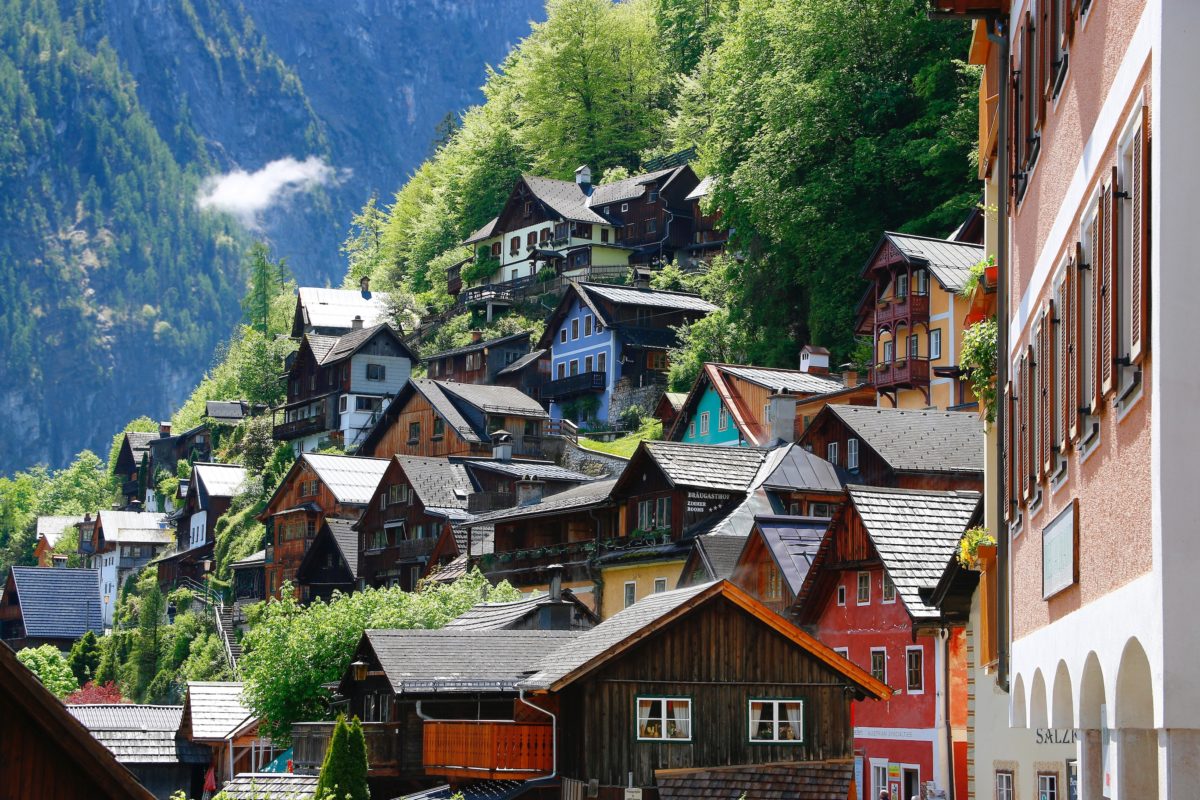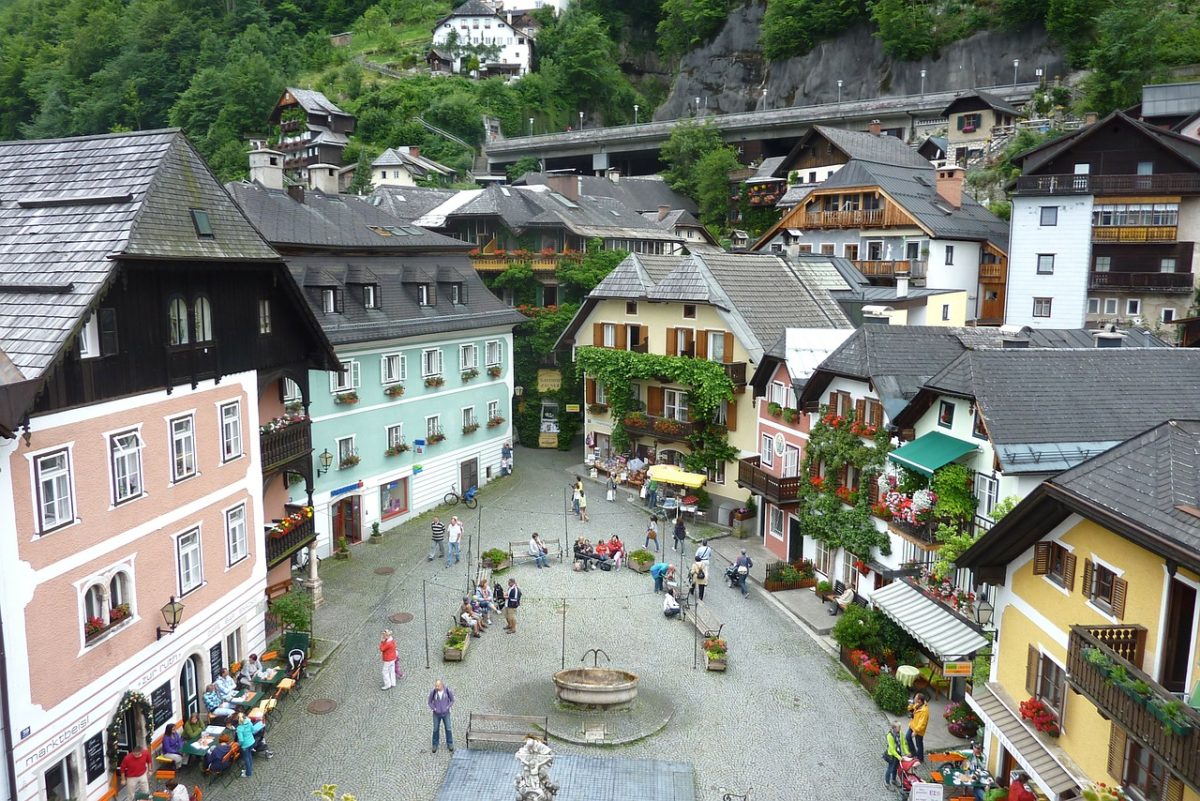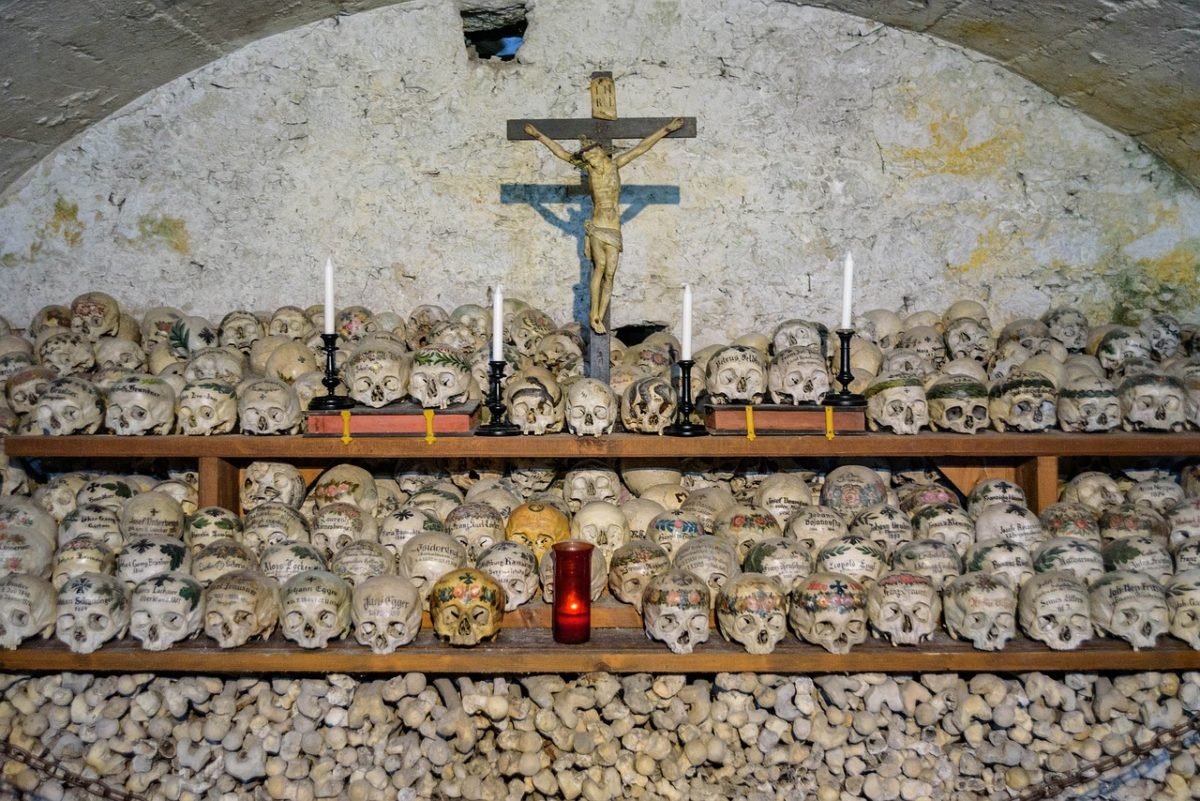This week’s travel crush is Hallstatt, Austria: an Instagram-famous fairy tale village with a few dark surprises.
I think I am the person I am primarily because I didn’t grow up with Disney-fied fairy tales. Instead, my mom read me and my sister the real versions of those stories: those penned by the Brothers Grimm, whose tales are notoriously dark—and, if you ask me, much better than anything Mickey Mouse could recreate in technicolor.
Rather than a bright and happy story like Snow White or Cinderella (both of which, for the record, are actually pretty darn intense), my favorite as a child was the delightful Godfather Death, in which Death’s godson cheats him and is forced to watch his own life-sustaining candle go out. And they all lived happily ever after.
In my opinion, the twisted nature of these tales is what makes them great; if it were up to me, every fairytale would have an edge. Which leads me to this week’s travel crush: Hallstatt, Austria.
Recently, Hallstatt has become an Instagram phenomenon. Nestled in a valley of the idyllic Salzkammergut Mountains, the UNESCO World Heritage Site may be one of the most beautiful storybook villages in the world, recognizable for its dreamy 18th-century homes perched on the shores of Lake Hallstatt.
But in fact, Hallstatt is famous for more than just incredible views. Here, visitors can find the world’s oldest salt mine (7,000 years old), stunning ice caves—and much to my (crooked) delight, a few dark little treasures: for example, the Beinhaus, the largest collection of skulls in all of Europe, and the Krampus Run, an annual event during which residents run around town wearing horrifying masks to ward off evil.
Brothers Grimm, eat your hearts out.
Let’s Play Pretend
I’m checking in to Hallstatt Hideaway, perhaps the village’s most charming stay, because we can still pretend to live in a perfect fairy tale (at least for a little while).
Marketplatz! (Gesundheit.)
Found in the heart of the village, the Central Square Market will put you right in the center of Hallstatt’s medieval charm: cobblestone streets, colorful ivied homes, and cozy cafes and restaurants (like Restaurant zum Salzbaron for meals and Café Derbl for Austrian pastries) included.
Them Bones, Them Bones, Them Dry Bones
The Beinhaus: Let’s discuss. Located inside St. Michael’s Chapel, the Karner ossuary was created after the town’s cemeteries began running out of space in the 1700s. The collection houses 1,200 human skulls, over 600 of which are painted with symbolic flora, names, and dates, a tradition used by families to remember their lost loved ones. They’re hauntingly beautiful and particularly appealing to macabre tourists such as myself.
Then, a spooky bonus: the Krampus Run, held each year on December 5th. During this festival, locals don terrifying handmade masks and parade around in an attempt to run bad spirits out of town ahead of Christmas. If you have a child who could use a lesson—or if you just love a good, spooky story—there’s no place like Hallstatt for the holidays.








